Hand-Rubbed Tea in Japan: The Ultimate Guide

Anna Ayvazyan
Posted on October 28, 2022
Share:
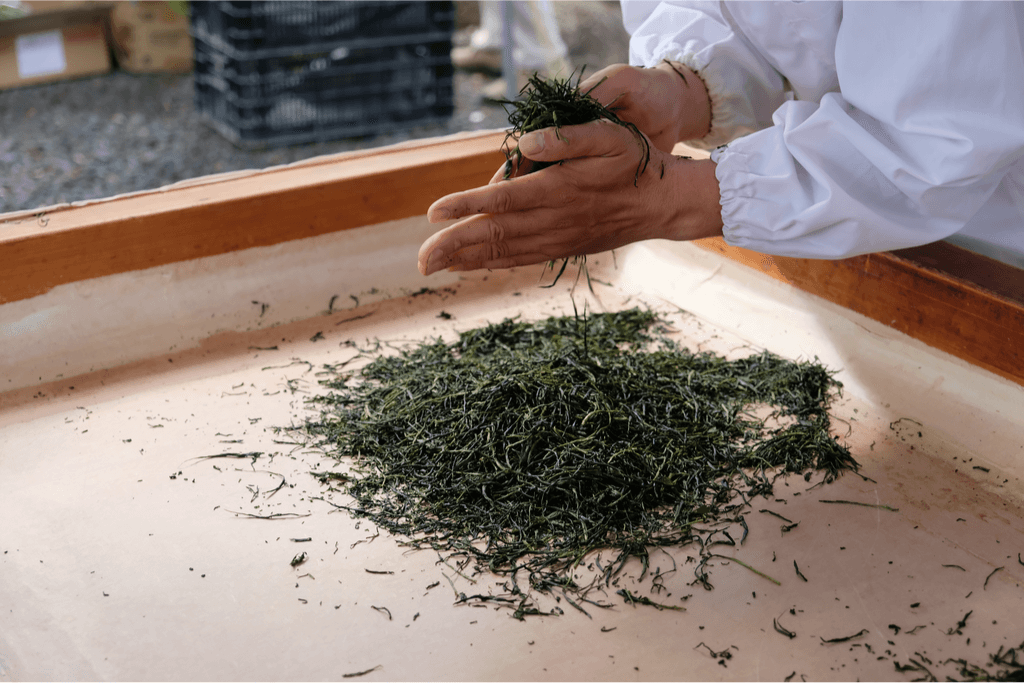
Tea is one of the healthiest drinks in the world and is the main drink to have with a meal in several countries, including Japan! Some of the most popular teas in Japan are matcha (green tea), houjicha (roasted green tea), mugicha (barley tea), sencha (steamed green tea) and sobacha (buckwheat tea). There are also unique teas like temomicha (hand-rubbed tea) which is prepared entirely by using their hands.
The flavor of tea can be greatly influenced by how the tea leaves are used to make the final product. In particular, the temperature of the water is very important when preparing tea – if it is too hot you can burn the leaves. This article will introduce a type of tea you probably have never heard of or tried, hand-rubbed tea!
Overview
According to historical records, tea was first introduced to Japan from China by monks Saisho and Kukai. Later, another monk, Eisai – the founder of Japanese Zen Buddhism— went to China on a pilgrimage and brought back some tea leaf seeds. He shared seeds with Myoe Shonin, a high-ranking monk who is the founder of Uji Tea. Myoe Shonin planted the tea seeds at his temple, Kozanji in Toganoo (old town of Kyoto), as well as in Uji and Ujitawara.
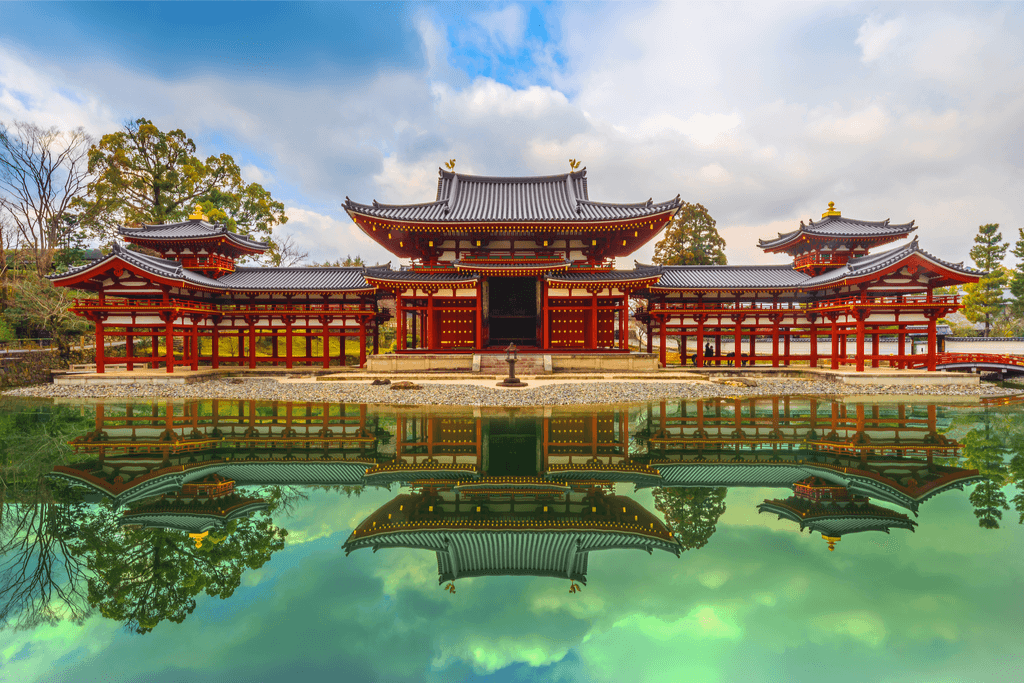
Following Myoe’s introduction of tea to Kyoto and Uji, Myoe sought to improve the quality of the taste of tea. He found that Uji River tea was of very high quality and soon Uji came to be known as the highest-ranking tea-producing area in Japan. After the emergence of Uji tea, Sencha and Gyokuro (shaded Sencha) soon followed.
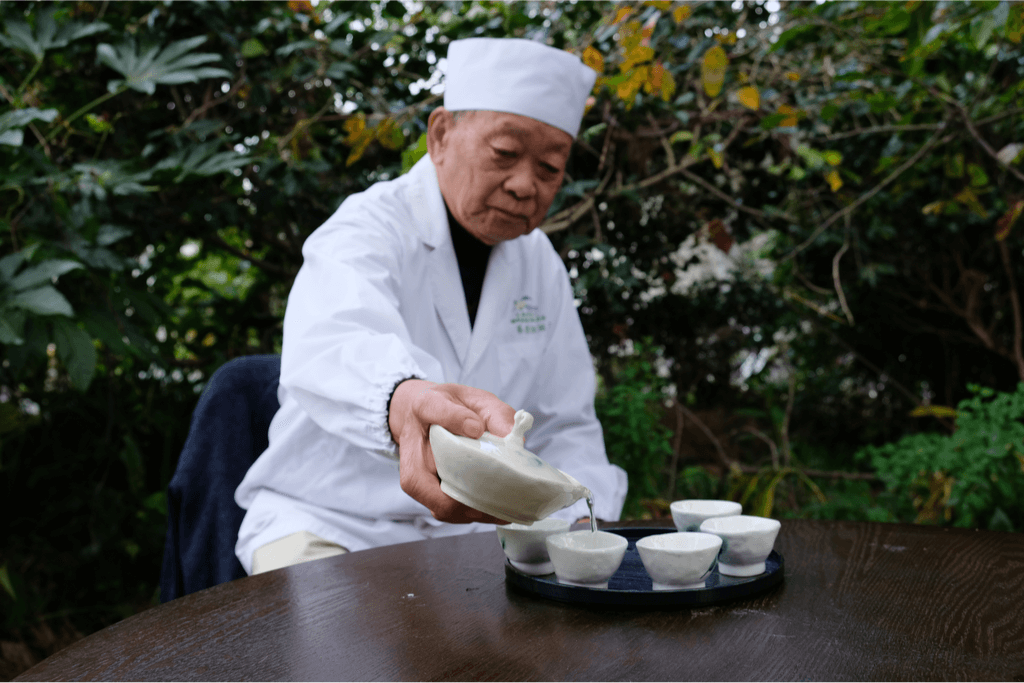
Gyokuro is slightly different from sencha because it grows in the shade and is hand-rolled. Nowadays, most tea is machine rolled (kikaimomi). However, some types and brands of tea stick to the traditional method of hand rolling/rubbing (temomi).
What is Hand-Rubbed Tea?
Historically all sencha tea was hand-rubbed. Hand-rubbed tea or hand-rolled tea refers to the process of only using hands to rub or roll the tea leaves in a multi-stage process. The rubbing/rolling process takes several hours and utilizes a hoiro (a kiln usually used for drying and kneading tea leaves).
A hoiro is a workstation usually the size of one tatami mat and is covered in washi paper (traditional Japanese paper). The hoiro is heated from underneath, traditionally by charcoal but nowadays gas or electricity can be used too. The rubbing/rolling has seven stages: tea picking, steaming, primary rolling, secondary rolling, final rolling, drying, and the final finish.
Tea picking
Nowadays, most tea picking is machine-based. Traditionally, farmers pick tea by hand. Some tea brands are still hand-picked today. If tea shoots are left used after being plucked for too long they start to ferment and become discolored.
Therefore, tea leaves need to be processed as soon as they are plucked. Freshness is very important in producing tea in Japan.
Can’t get enough hand-rubbed tea and other Japanese mainstays? Then try Sakuraco! Sakuraco sends authentic Japanese tea, sweets and snacks, right to your door.
Steaming
Freshly picked tea leaves are steamed at high temperatures for several seconds. Traditionally, the amount of tea leaves a tea master can steam at one time is between 1.2kg to 1.7kg. After steaming, the leaves are set to cool immediately afterwards.
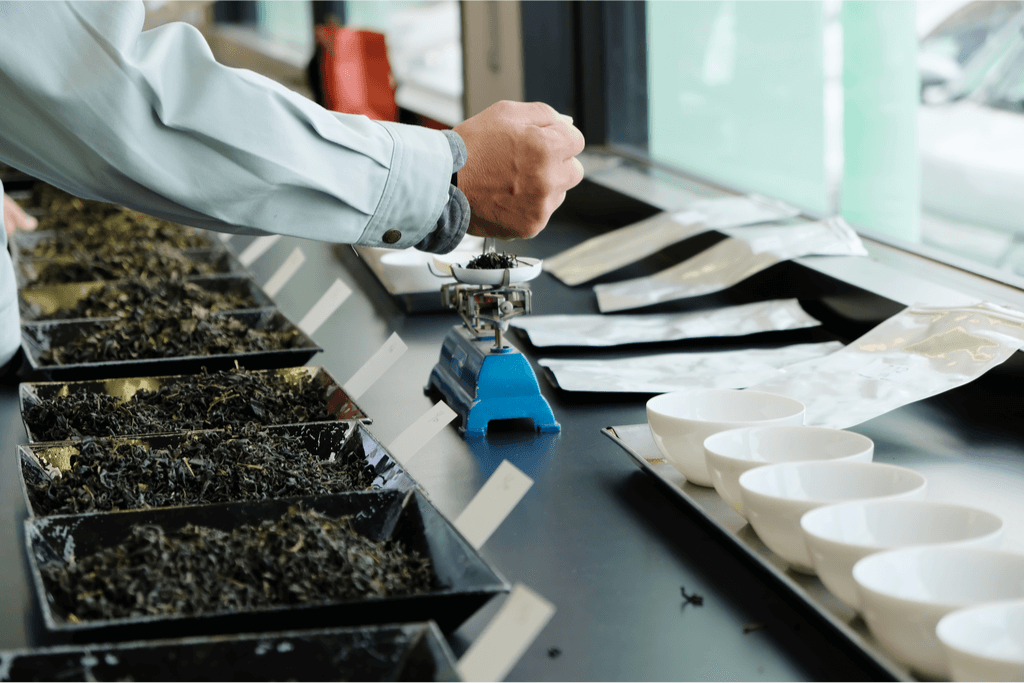
This steaming process is to prevent oxidase activity within the leaves. It also helps rid the leaves of strong smells, and to make the leaves tender. The quality of many aspects of the tea such as its flavor, aroma, and color depends on this important steaming process.
Primary Rolling or Light Rotation Kneading
This involves draining the leaves so that they are easier to rub or roll. The leaves are shaken and then rolled with both hands left and right to squeeze out the moisture inside the tea leaves. In this step, the leaves are lightly kneaded while being rubbed. This step takes about 50 minutes and the weight of the tea leaves normally decreases by 30%.
Secondary Rolling or Heavy Rotation Kneading
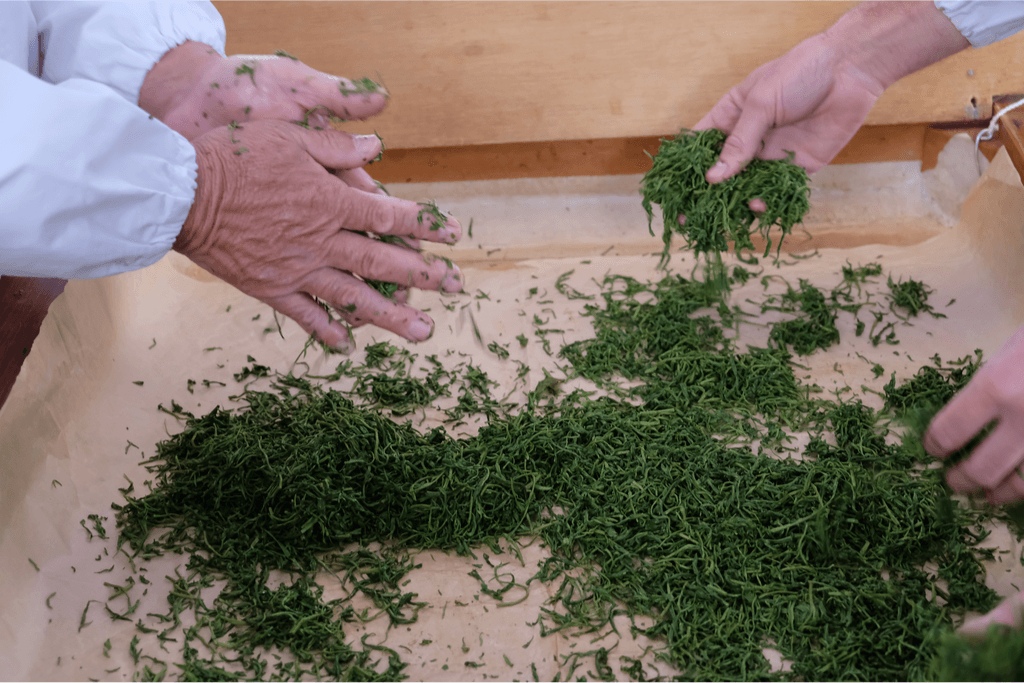
After kneading lightly the tea leaves are then kneaded heavily. Due to the heavy kneading, the tea leaves’ cell walls break thus enhancing the flavor and aroma. In this step “tea balls” are formed due to the clumps made from kneading.
The tea balls are loosened with the palms moving back and forth. This step takes about 10 minutes and the weight of the tea leaves normally decreases by 50%. The hoiro is also cleaned for the next step.
Final Rolling
Once the hoiro is cleaned the leaves are once again rolled/rubbed to make them elongate. This is done by holding the leaves in both hands and moving them back and forth in front of your chest.
The amount of weight put on the leaves by the hands is important. Too much weight can flatten the tea, and too little can produce bent leaves. This process can take up to an hour and a half to complete.
Drying
The tea leaves are then spread evenly on the hoiro at a temperature of around 158 °F (70 °C). A hole is made in the middle so that heat can dissipate without burning the leaves. Too little drying will cause the tea to be discolored, badly preserved, or have a defective aroma.
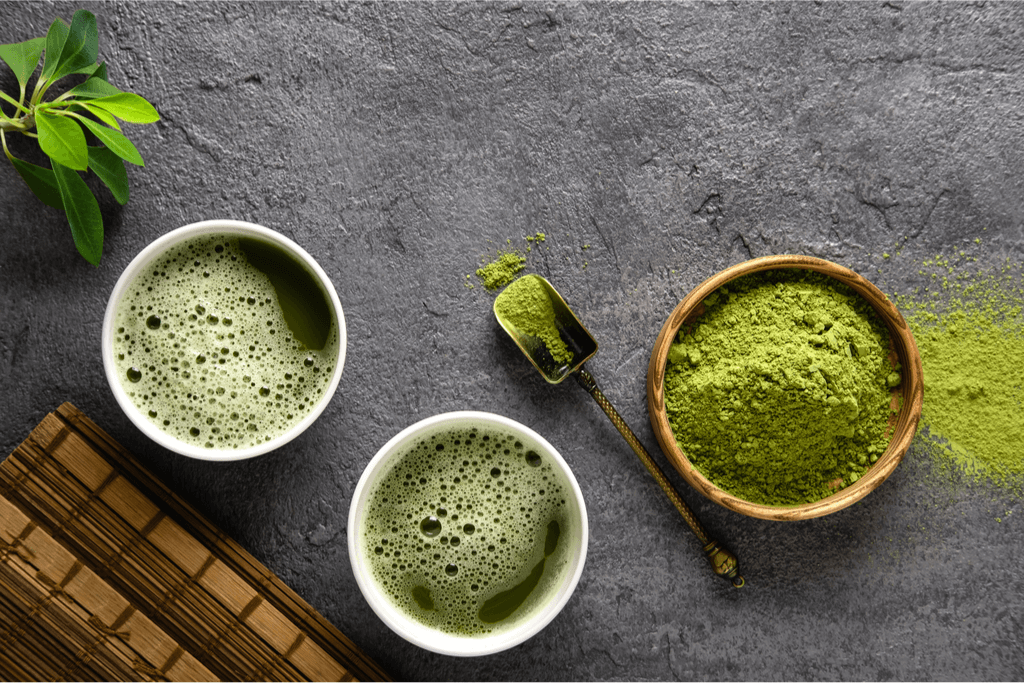
Too much drying will also discolor and deprive tea of its important flavor. This step usually takes 2 hours and tea leaves are moved about every 30 minutes to ensure they are dried evenly.
Final Finish
The tea is then sorted into leaves, stems, and powder. After being sorted they are packaged to be sold.
To serve hand-rubbed/rolled tea it is recommended you first boil the water to about 140°F using a yuzamashi (water cooler). Then put approximately 3 grams of tea leaves or powder in a teapot or plate and pour about 30ml of chilled hot water so that the needle-like leaves are not broken. After about 2 minutes of steeping, pour the tea from the yuzamashi into a cup of hot water. The more you add the hot water the more the flavor of the tea changes.
Hand-rubbed or rolled tea is probably one of the most unique teas to try because it is something that takes a lot of effort to produce. It is something that will definitely make you feel relaxed after a long day’s work! What’s your favorite tea? Let us know in the comments below!

Discover authentic flavors with Sakuraco
Get Sakuraco 

Discover authentic flavors with Sakuraco
Get Sakuraco 
Related Articles
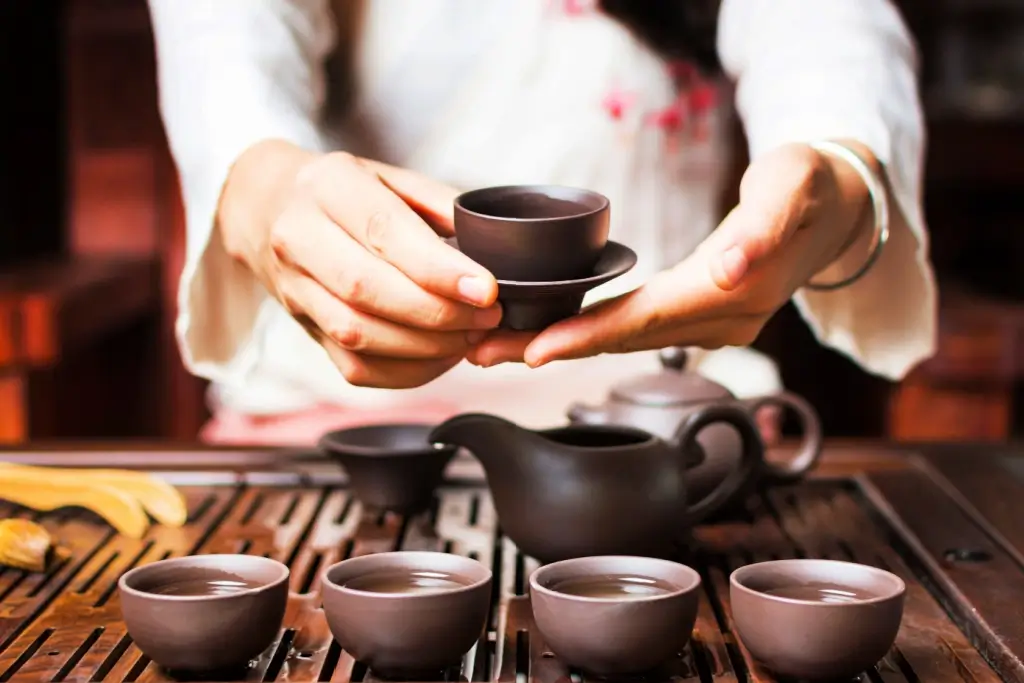
Japanese Ceramics: The Joy of Shonzui Pottery and More
Japanese ceramics are famous worldwide for their beauty and craftsmanship. They offer a world of artistry for collectors and admirers, from designs to glazing.
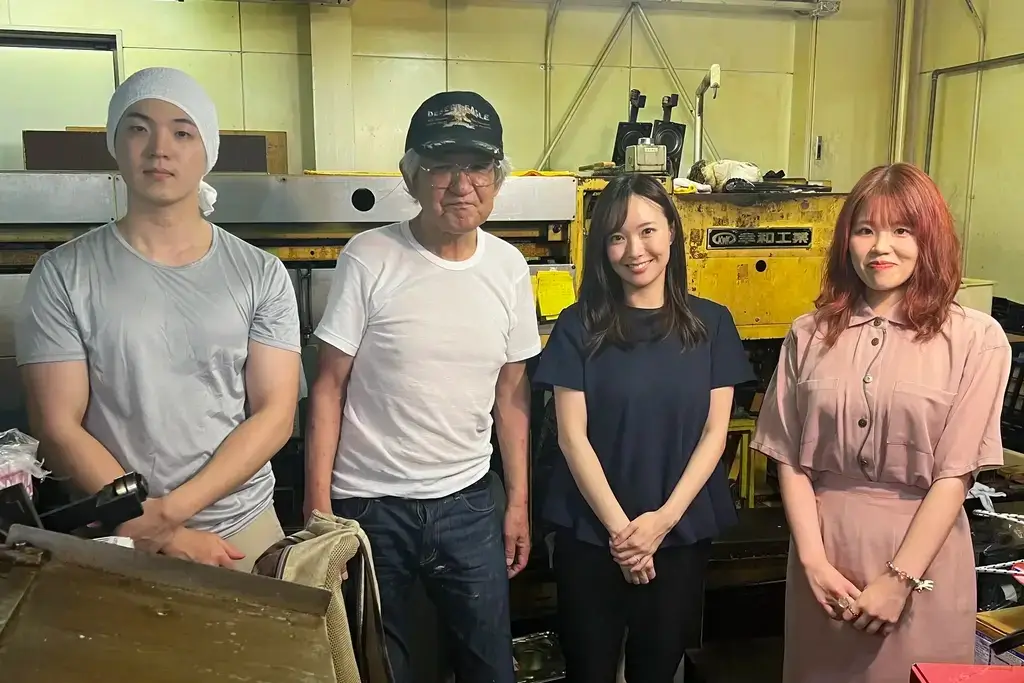
White Sesame Senbei from Eisendo in Ishikawa!
White sesame senbei is one of Eisendo’s most notable confectioneries. Let’s learn how they make them and why they’re so important in Ishikawa.

Ishikawa Japan: The Enchanting Land by the Sea
From Kanazawa’s stunning gardens to the Noto Peninsula’s rugged beauty, Ishikawa offers a unique blend of experiences that captivate every visitor to Japan. Let’s take a closer look at why this area is important.
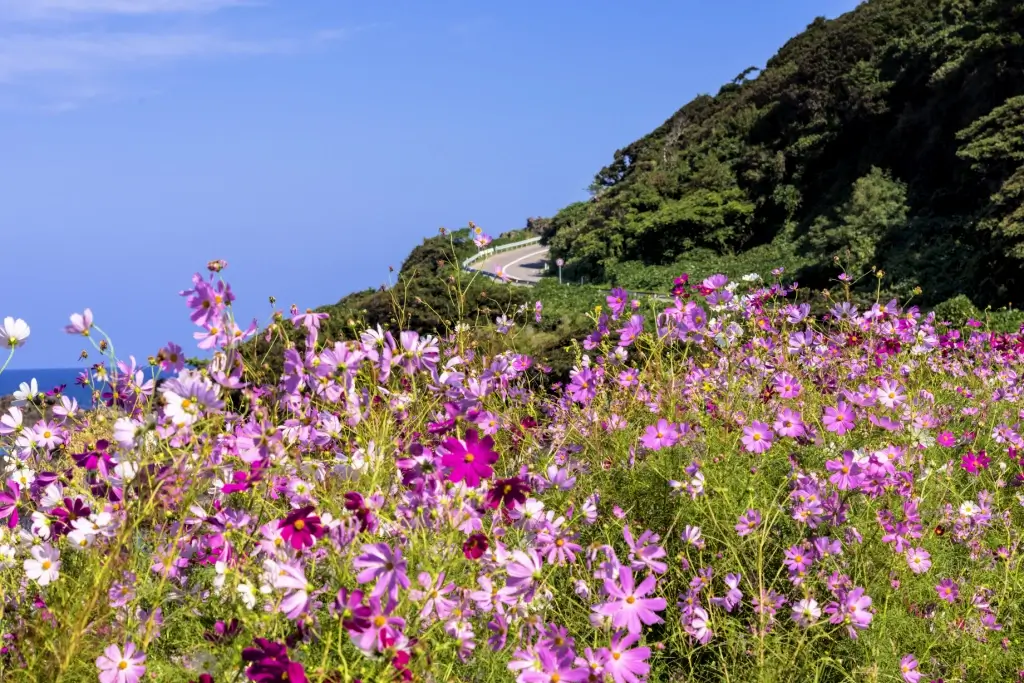
Noto Peninsula: A Remote Land in Recovery
Noto offers an authentic Japanese experience for those exploring Japan’s lesser-known natural sites and culture. Let’s explore this remarkable peninsula and see why it is so favored by travelers seeking authentic Japanese culture.



